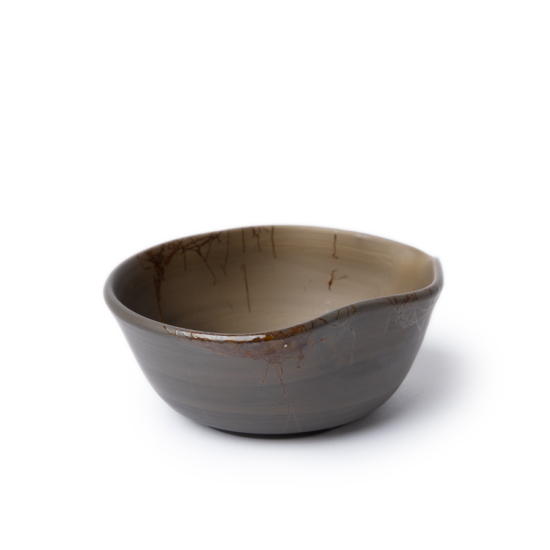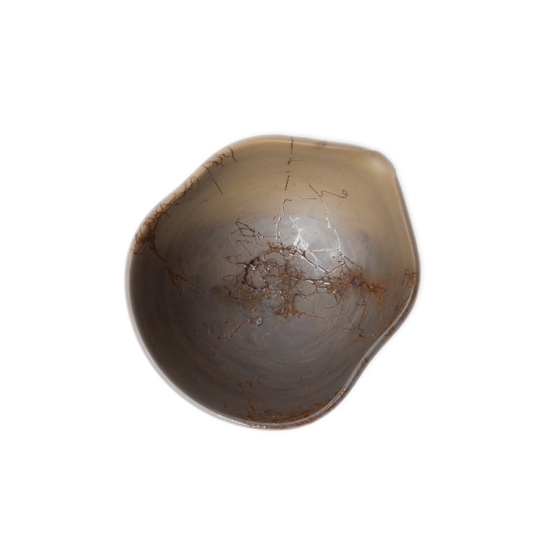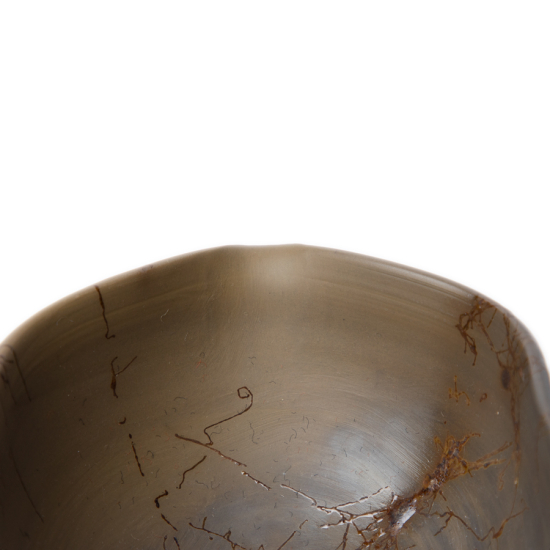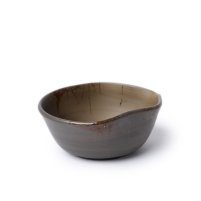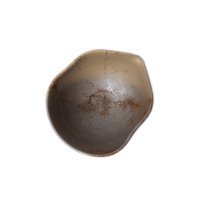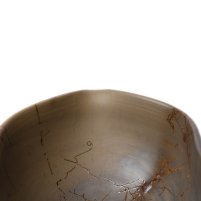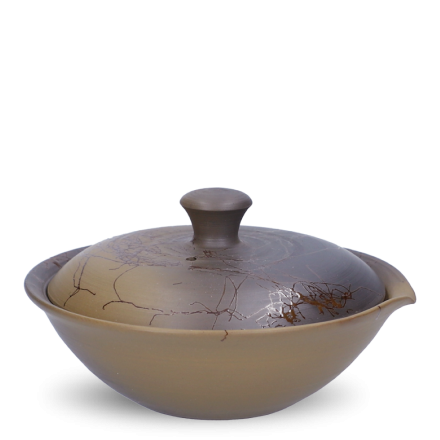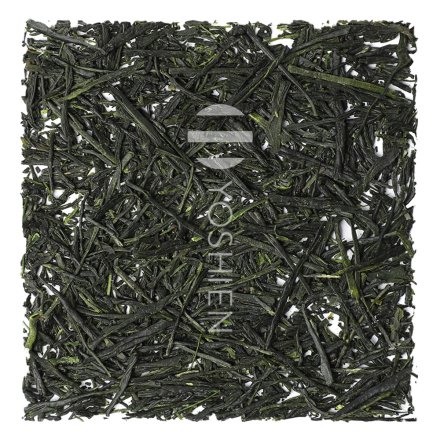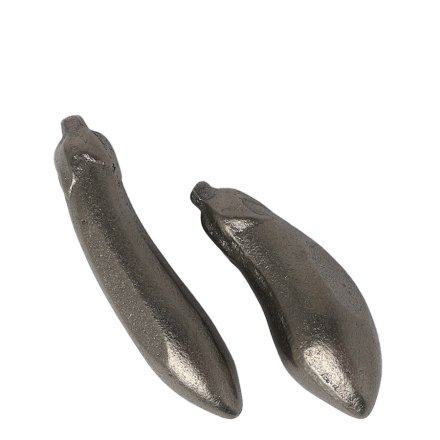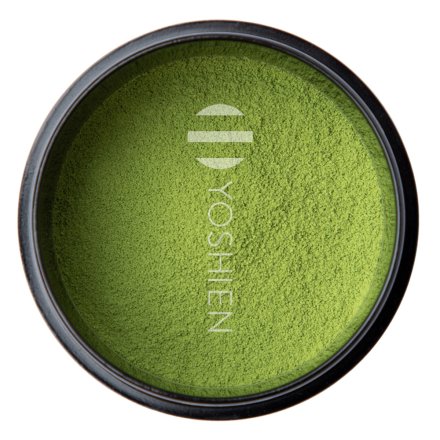As with all unglazed ceramics, wash with warm water and a soft cloth only. Do not use washing-up liquid or put in the dishwasher. Pat dry with a towel and/or leave to air dry naturally. Hard water may cause limescale deposits to develop, in which case rinse the Yuzamashi with soft bottled water, then wipe with a soft cloth.
Yuzamashi
Tokoname Mogake
Hakusan
SKU
4125
Beautiful Yuzamashi cooling bowl handcrafted by Hakusan Katayama III (b.1949) with his speciality Mogake seaweed patterning and a fetching green to black Yohen colour gradient. Perfect for preparing Gyokuro and Kabusecha that require a lower brewing temperature, as well as pairing with the matching Shiboridashi.
| Product | Yuzamashi water cooler, green |
| Origin | Tokoname, Aichi, Japan |
| Maker | Hakusan 白山 |
| Volume | 120ml |
| Dimensions | Ø9 x 4.5cm |
| Weight | 85g |
| Material | Ceramic |
| Finish | Unglazed (Yakishime 焼き締め ) |
| Decoration | Ombré (Yōhen 窯変 ), Mogake (藻掛け "seaweed wrapped") |
| Production | Potter's wheel (Rokuro 轆轤 ) |
| Artist mark | Signature on base |
| Packaging | Cardboard box |
Each piece is handmade and unique, therefore colour, volume, dimensions and weight may vary slightly
Notify me when this product is available:
Reminder set



